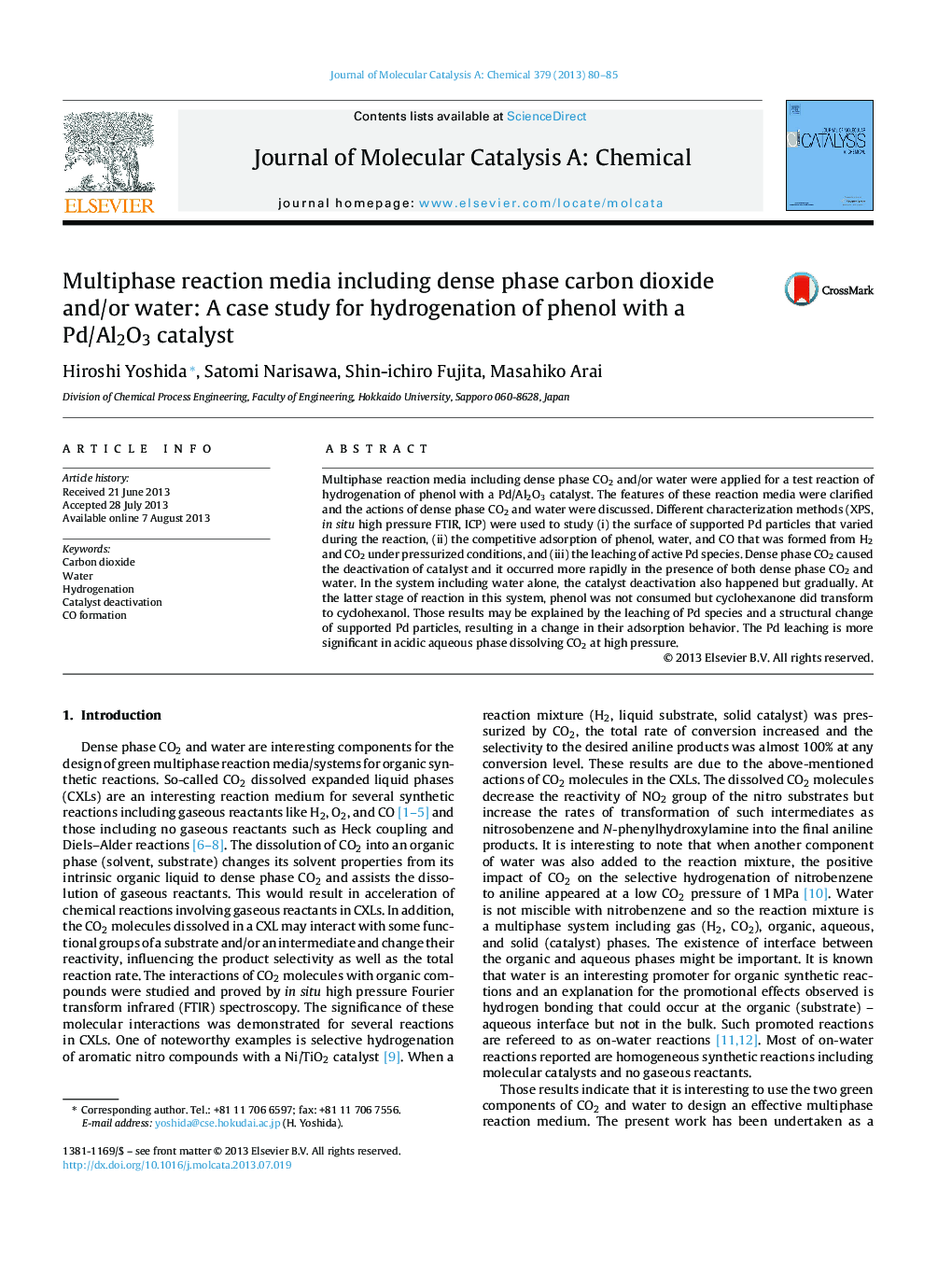| Article ID | Journal | Published Year | Pages | File Type |
|---|---|---|---|---|
| 65648 | Journal of Molecular Catalysis A: Chemical | 2013 | 6 Pages |
•CO formed on Pd surface retards the adsorption of phenol.•Cyclohexanone is preferentially adsorbed on Pd than CO and water.•The leaching of Pd occurs and the potential of Pd surface gradually changes in hot water.•The catalyst deactivation occurs rapidly in the presence of both dense phase CO2 and water.
Multiphase reaction media including dense phase CO2 and/or water were applied for a test reaction of hydrogenation of phenol with a Pd/Al2O3 catalyst. The features of these reaction media were clarified and the actions of dense phase CO2 and water were discussed. Different characterization methods (XPS, in situ high pressure FTIR, ICP) were used to study (i) the surface of supported Pd particles that varied during the reaction, (ii) the competitive adsorption of phenol, water, and CO that was formed from H2 and CO2 under pressurized conditions, and (iii) the leaching of active Pd species. Dense phase CO2 caused the deactivation of catalyst and it occurred more rapidly in the presence of both dense phase CO2 and water. In the system including water alone, the catalyst deactivation also happened but gradually. At the latter stage of reaction in this system, phenol was not consumed but cyclohexanone did transform to cyclohexanol. Those results may be explained by the leaching of Pd species and a structural change of supported Pd particles, resulting in a change in their adsorption behavior. The Pd leaching is more significant in acidic aqueous phase dissolving CO2 at high pressure.
Graphical abstractFigure optionsDownload full-size imageDownload high-quality image (113 K)Download as PowerPoint slide
